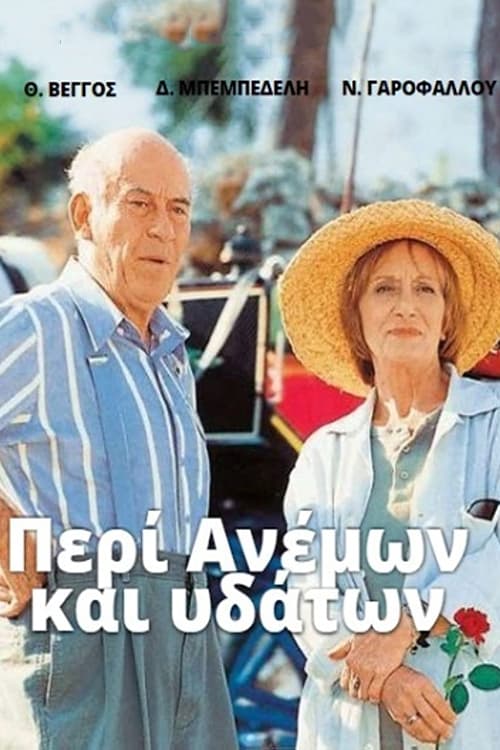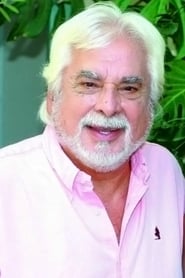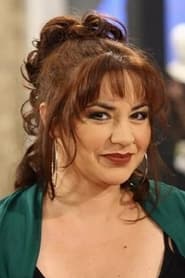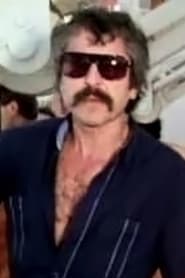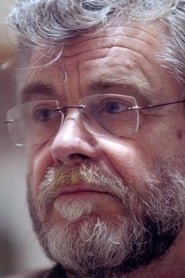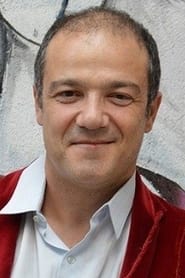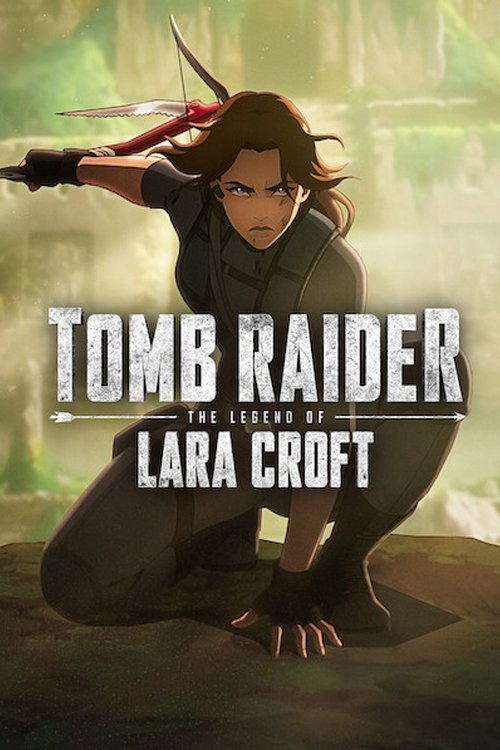
Ask Your Own Question
What is the plot?
In the opening scene of "About Winds and Waters," we are introduced to the protagonist, Elena, a passionate marine biologist who is conducting research on the effects of climate change on ocean ecosystems. The setting is a coastal town where she has lived her entire life, surrounded by the beauty of the sea. Elena is seen collecting samples and documenting her findings, showcasing her deep connection to the ocean. Her internal motivation is driven by a desire to protect the marine life she loves, and she is determined to raise awareness about the environmental issues facing the waters.
As the story progresses, Elena receives a call from her estranged father, a fisherman named Marco, who has been struggling with the declining fish populations. He invites her to join him on a fishing trip to discuss their strained relationship. Despite her reservations, Elena agrees, hoping to mend their bond. The tension is palpable as they set out on the boat, with Marco expressing his frustration over the changes in the ocean while Elena tries to explain the scientific reasons behind it. Their conversation reveals deep-seated emotions, with Marco feeling abandoned by Elena's choice of career and Elena feeling guilty for not being there for him.
During the fishing trip, a sudden storm brews on the horizon, and the father-daughter duo finds themselves battling the elements. The boat is tossed violently by the waves, and Elena's fear escalates as she struggles to keep her footing. Marco, trying to maintain control, shouts instructions, but the storm intensifies, leading to a moment of chaos where they nearly capsize. In a desperate attempt to save the boat, Marco makes a risky decision to head towards a nearby cove, which he believes will provide shelter. This decision is pivotal, as it forces them to confront their relationship amidst the life-threatening situation.
Once they reach the cove, the storm subsides, but the emotional storm between them continues. They have a heart-to-heart conversation where Marco reveals his feelings of loss and helplessness regarding the fishing industry. Elena, in turn, shares her fears about the future of the oceans and her commitment to making a difference. This moment of vulnerability leads to a breakthrough in their relationship, as they begin to understand each other's perspectives. The scene is filled with raw emotion, highlighting the complexities of familial bonds and the impact of external forces on personal relationships.
As the story unfolds, Elena discovers that illegal fishing practices are taking place in the area, threatening the marine life she is studying. She decides to investigate further, driven by her sense of responsibility to protect the ocean. This decision leads her to gather evidence, including photographs and testimonies from local fishermen who are also affected by the illegal activities. The tension builds as she realizes that exposing these practices could put her in danger, especially since some of the fishermen involved are connected to her father's circle.
In a climactic confrontation, Elena confronts the leader of the illegal fishing operation, a man named Victor, who is known for his ruthless tactics. The encounter takes place in a dimly lit warehouse where Victor operates. Elena, armed with her evidence, demands that he cease his activities. Victor, dismissive and threatening, tries to intimidate her, but Elena stands her ground, fueled by her passion for the ocean. The confrontation escalates into a physical struggle, with Elena narrowly escaping after a tense chase through the warehouse. This sequence is filled with suspense, showcasing Elena's determination and bravery.
After the confrontation, Elena returns to her father, seeking his support in her fight against the illegal fishing. Marco, initially hesitant, realizes the importance of standing up for their shared love of the ocean. Together, they devise a plan to gather more evidence and rally the local community to take action. This partnership marks a turning point in their relationship, as they work together towards a common goal, bridging the gap that had long divided them.
The climax of the story occurs during a community meeting where Elena presents her findings to the townspeople. The atmosphere is charged with emotion as she passionately speaks about the need to protect their waters. Marco stands by her side, publicly supporting her efforts. The community is moved, and they decide to take a stand against the illegal fishing practices. This moment is a culmination of Elena's journey, showcasing her growth and the rekindling of her relationship with her father.
In the final scenes, the community comes together to implement new regulations and protect their marine resources. Elena and Marco are seen working side by side, restoring their bond and finding a new purpose in their shared mission. The story concludes with a sense of hope, as the ocean begins to heal and the community embraces sustainable practices. The final shot captures Elena standing on the shore, looking out at the vast ocean, symbolizing her commitment to continue fighting for the waters she loves.
What is the ending?
In the ending of "About Winds and Waters," the main characters confront their inner demons and the consequences of their choices. The protagonist, Elena, finds closure with her estranged father, while her friend Marco makes a pivotal decision about his future. The story concludes with a sense of hope and renewal as the characters embrace their paths forward.
As the final episode unfolds, the scene opens on a stormy evening, the winds howling outside as Elena stands at the edge of a cliff overlooking the turbulent sea. The dark clouds mirror her internal turmoil as she grapples with her feelings of abandonment and longing for connection. The camera captures her silhouette against the backdrop of crashing waves, emphasizing her isolation.
Cut to Marco, who is in a small, dimly lit café, nervously tapping his fingers on the table. He is waiting for a crucial phone call that could change the course of his life. The tension in the air is palpable as he reflects on his past decisions, particularly his strained relationship with his family. The café is filled with the sounds of clinking cups and hushed conversations, but Marco feels utterly alone in his thoughts.
The scene shifts back to Elena, who receives a text message from her father, inviting her to meet. The message is simple yet loaded with unspoken emotions. She hesitates, her heart racing as she contemplates the possibility of reconciliation. The camera zooms in on her face, capturing the flicker of hope mixed with fear.
In the next scene, Elena arrives at a small, rustic house where her father lives. The atmosphere is tense as she knocks on the door, her heart pounding in her chest. When her father opens the door, there is a moment of silence, both of them unsure of how to bridge the gap of years lost. The room is filled with memories, old photographs lining the walls, each one a reminder of their fractured relationship.
As they sit down to talk, the conversation is awkward at first, filled with pauses and hesitant words. Elena's father expresses his regrets, his voice trembling with emotion. Elena listens, her eyes welling with tears as she finally allows herself to confront the pain of her past. The scene is intimate, the lighting softening the harshness of their reality, creating a space for healing.
Meanwhile, back at the café, Marco receives the call he has been waiting for. It's an offer for a job that would take him away from his hometown, a chance to start anew. He grapples with the decision, torn between the comfort of familiarity and the fear of the unknown. The camera captures his internal struggle, the flickering candlelight reflecting the uncertainty in his eyes.
The narrative weaves back to Elena and her father, who share a moment of vulnerability. They begin to reminisce about happier times, laughter breaking through the tension. This scene is pivotal, showcasing the power of forgiveness and the possibility of rebuilding relationships. As they embrace, the storm outside begins to subside, symbolizing the calm after the emotional turmoil.
In the final scenes, Marco makes his decision. He stands outside the café, looking out at the horizon, the sun beginning to rise. He takes a deep breath, a sense of determination washing over him. The camera follows him as he walks away from the café, ready to embrace his future.
The series concludes with a montage of both characters moving forward. Elena is seen walking along the beach, the waves gently lapping at her feet, a serene smile on her face as she looks out at the ocean, symbolizing her newfound peace. Marco is shown boarding a train, a look of resolve on his face as he gazes out the window, the landscape blurring past him, representing the journey ahead.
The final shot lingers on the horizon, where the winds and waters meet, a metaphor for the characters' intertwined fates and the endless possibilities that lie ahead. The screen fades to black, leaving the audience with a sense of hope and the understanding that while the past shapes us, it does not define our future.
Is there a post-credit scene?
The TV show "About Winds and Waters," produced in 2000, does not feature a post-credit scene. The series concludes its narrative arcs within the final episode, wrapping up character storylines and thematic elements without any additional scenes after the credits. The focus remains on the emotional resolutions and the journeys of the characters throughout the series, leaving viewers with a sense of closure as the credits roll.
What are the main conflicts faced by the protagonist in About Winds and Waters?
The protagonist, a young sailor named Elara, faces multiple conflicts throughout the series. Initially, she struggles with her identity and the expectations placed upon her by her family, who wish for her to abandon her dreams of sailing. As she embarks on her journey, she encounters fierce storms that test her skills and resolve, both physically and emotionally. Additionally, Elara grapples with her feelings for a rival sailor, which complicates her quest for independence and self-discovery.
How does the relationship between Elara and her rival sailor develop throughout the series?
Elara's relationship with her rival sailor, Kael, evolves significantly over the course of the series. Initially, they are adversaries, competing for the same prestigious sailing title. Their interactions are charged with tension and rivalry, but as they face challenges together, including treacherous weather and personal losses, they begin to understand and respect each other's strengths. This gradual shift from competition to camaraderie ultimately leads to a deeper emotional connection, culminating in a pivotal moment where they must choose between their ambitions and their growing feelings for one another.
What role does the sea play in shaping the characters' journeys in About Winds and Waters?
The sea serves as both a literal and metaphorical backdrop for the characters' journeys. For Elara, the ocean represents freedom and the pursuit of her dreams, but it also embodies danger and unpredictability. Each encounter with the sea--whether it be a serene moment of reflection or a harrowing storm--forces the characters to confront their fears and desires. The vastness of the ocean mirrors Elara's internal struggles, as she learns to navigate not only the waters but also her own emotions and relationships.
What significant events lead to Elara's transformation throughout the series?
Elara's transformation is marked by several key events. One pivotal moment occurs when she survives a devastating storm that nearly claims her life, forcing her to confront her vulnerabilities and the reality of her ambitions. Another significant event is her decision to help a fellow sailor in distress, which highlights her growth in empathy and leadership. These experiences, coupled with her evolving relationship with Kael, lead her to embrace her identity as a sailor and a leader, ultimately shaping her into a more confident and self-assured individual.
How do the supporting characters influence Elara's journey in About Winds and Waters?
The supporting characters play crucial roles in shaping Elara's journey. Her mentor, Captain Thorne, provides guidance and wisdom, challenging her to push beyond her limits while instilling a sense of responsibility. Meanwhile, her childhood friend, Mira, represents the life Elara is torn away from, serving as a reminder of the sacrifices she must make. Each supporting character brings their own struggles and perspectives, influencing Elara's decisions and growth, ultimately helping her to realize the importance of community and collaboration in her quest for self-discovery.
Is this family friendly?
"About Winds and Waters," produced in 2000, is a family-oriented show that primarily focuses on themes of nature, family bonds, and personal growth. However, there are a few scenes and aspects that might be considered potentially objectionable or upsetting for children or sensitive viewers:
-
Natural Disasters: The show features scenes depicting storms and floods, which may be intense and frightening for younger viewers. The portrayal of nature's fury can evoke feelings of anxiety.
-
Conflict and Tension: There are moments of conflict between characters, including misunderstandings and emotional confrontations. These scenes may evoke feelings of sadness or discomfort.
-
Loss and Grief: The narrative touches on themes of loss, including the impact of losing a loved one or a pet. These moments are handled with sensitivity but may still be upsetting for some viewers.
-
Environmental Concerns: The show addresses issues related to environmental degradation and its effects on communities, which may be distressing for sensitive viewers who are particularly attuned to such topics.
-
Character Struggles: Some characters face personal challenges, such as dealing with failure or feeling isolated, which may resonate deeply with viewers and evoke strong emotional responses.
Overall, while "About Winds and Waters" is designed to be family-friendly, these elements may require parental guidance for younger audiences or those who are particularly sensitive.

